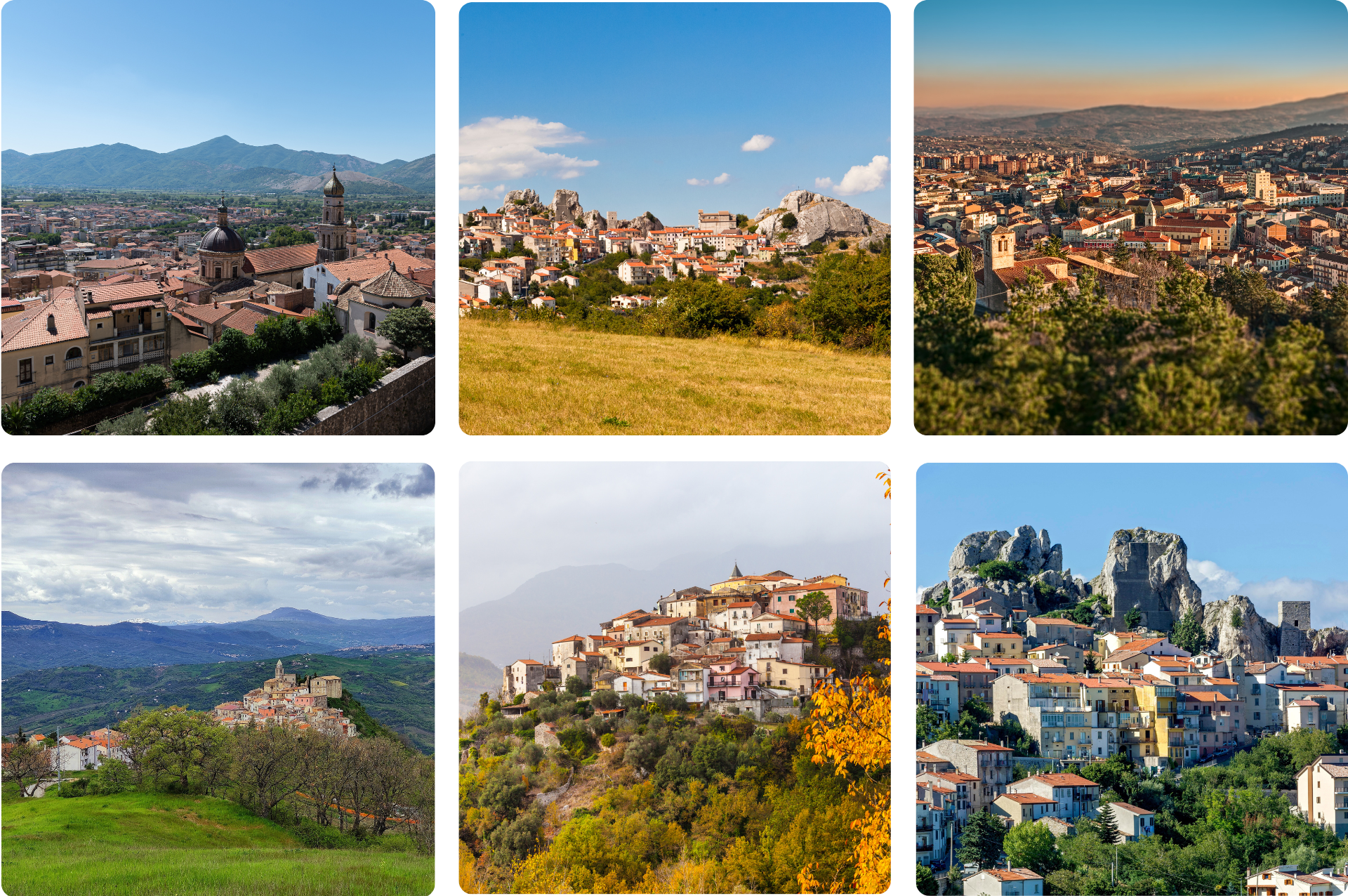Molise

The prehistory of Molise: ancient origins
The history of Molise begins in the Stone Age, when hunters of Samnite lineage inhabited the region, living on wild prey and gathering. Isernia, or Aesernia, emerges as an important Samnite center, marking the beginning of a history full of events.
Roman rule: an era of change
In the 3rd century BC, the Samnites faced the Romans, marking the beginning of Romanization. This process was not limited to architecture and art, but profoundly influenced language, laws, and customs, shaping Molise into a cultural melting pot.
The fall of the Western Roman Empire in 476 AD left Italy, and with it Molise, exposed to barbarian invasions. The Lombards, followed by the Normans, dominated the region, extending its borders and profoundly influencing its culture.
In the 16th century, Molise integrated into the Kingdom of the Two Sicilies, passing under the dominion of various dynasties, including the Bourbons and Napoleon Bonaparte. The unification of Italy in 1860 and the subsequent separation from Abruzzo in 1963 define Molise as an autonomous region.

Monuments and sites of interest: guardians of Molise's history
From the Swabian Castle of Termoli to the Antiquarium of Saepinum-Altilia, Molise preserves archaeological and architectural treasures that narrate centuries of history, culture and tradition.

The rich food and wine history of Molise
Molise cuisine, with its deep-rooted culinary traditions, offers a panorama of authentic flavours, differentiated between the hinterland and the coast. From pasta and meat dishes to fish specialities, Molise celebrates simplicity and authenticity.
Typical products: expressions of the territory
Molise stands out for the production of fusilli, cheeses, cured meats and white truffles, symbols of a food and wine tradition that expertly blends the quality of local products with culinary art.


Traditional celebrations and festivals: the popular soul of Molise
The folkloristic events and festivals, such as the Living Nativity Scene of Montenero di Bisaccia and the Carnival of Larino, represent the lively essence of Molise culture, uniting tradition and community in unique celebrations.
The geographical and demographic panorama of Molise
With a population of around 300,000 inhabitants, Molise boasts a varied territory, from the mountain ranges of the Apennines to a suggestive Adriatic coast. The region is characterized by uncontaminated natural landscapes and rich biodiversity.

